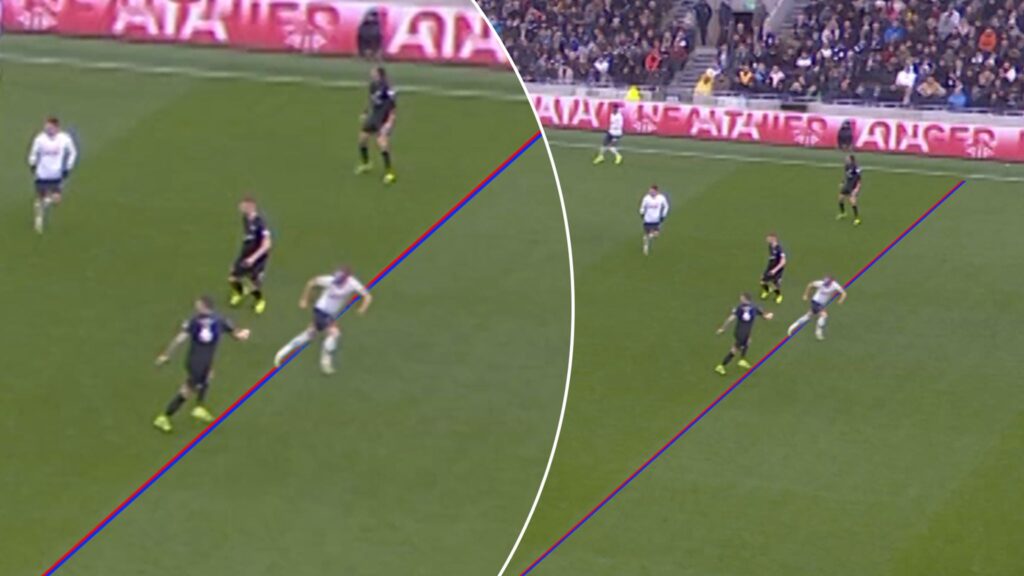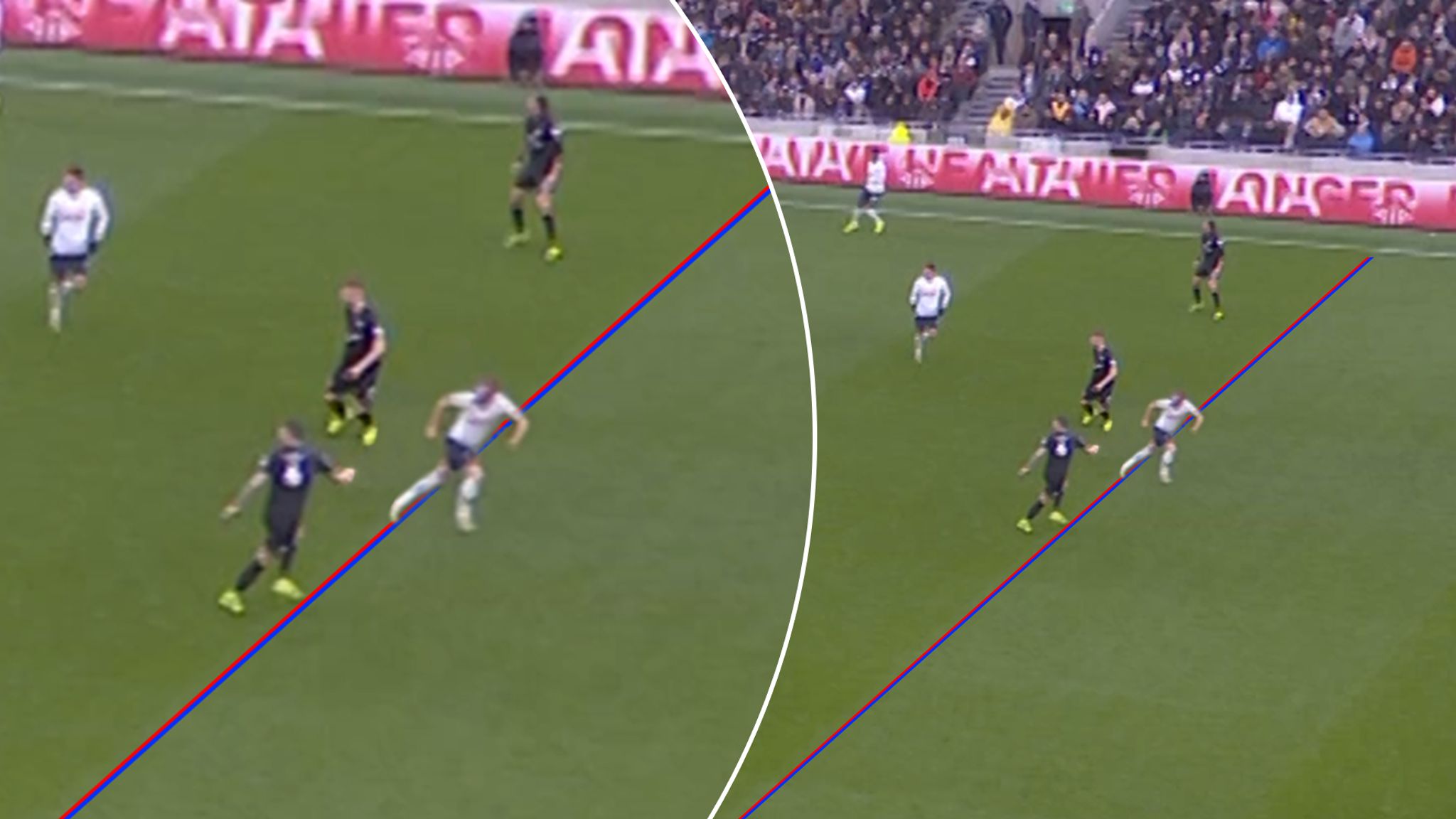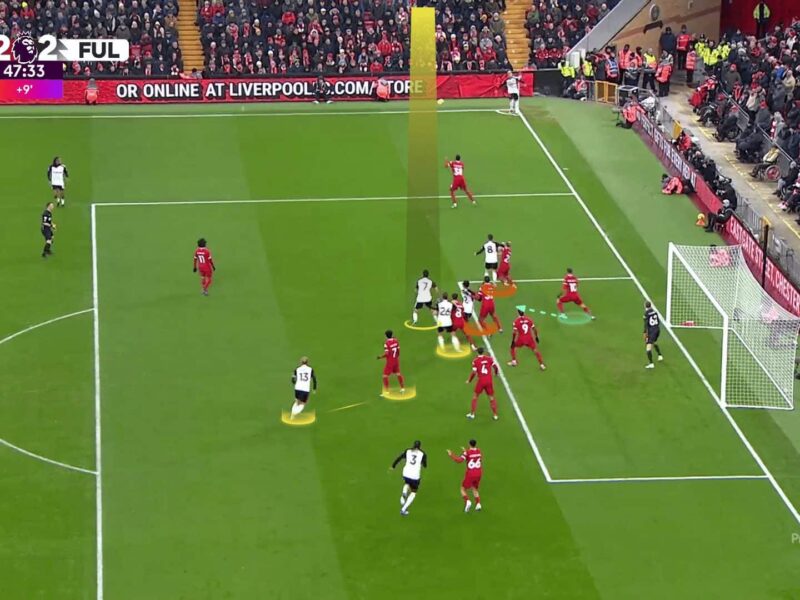Few things in football can elicit a collective groan (or cheer, depending on your allegiance) quite like the sight of the assistant referee’s flag shooting up for offside. It’s a rule fundamental to the shape and tactics of the modern game, yet it remains a constant source of confusion, debate, and, increasingly, technological scrutiny.

What exactly is offside, why does it cause so much trouble, and how has VAR changed the game? Let’s break it down.
The Basics: What IS Offside? (Law 11)
At its core, the offside rule exists to prevent “goal-hanging” – attackers simply waiting near the opponent’s goal for a long pass. It encourages tactical shape and movement. The rule has two main parts:
- Offside Position: A player is in an offside position if:
- Any part of their head, body, or feet is in the opponents’ half (excluding the halfway line), AND
- Any part of their head, body, or feet is nearer to the opponents’ goal line than both the ball AND the second-to-last opponent.
(Note: The goalkeeper is usually one of the last two opponents, but it can be any two defensive players. Arms and hands are not considered when judging offside position).
- Offside Offence: Being in an offside position is not an offence in itself. A player only commits an offside offence if, at the moment the ball is played or touched by a teammate, they become involved in active play by:
- Interfering with play: Playing or touching the ball passed or touched by a teammate.
- Interfering with an opponent: Preventing an opponent from playing or being able to play the ball by clearly obstructing their line of vision, challenging an opponent for the ball, or clearly attempting to play a ball which is close when this action impacts an opponent.
- Gaining an advantage by being in that position: Playing the ball or interfering with an opponent when the ball rebounds or deflects off the goalpost, crossbar, match official, or an opponent; OR playing the ball after it has been deliberately saved by an opponent.
Exceptions: A player cannot be offside directly from a goal kick, throw-in, or corner kick.
The Grey Areas: Where Controversy Begins
While the definition of “offside position” is relatively objective (especially with VAR), deciding whether a player in that position committed an offside offence involves subjective interpretation by the officials. This is where most debates arise:
- Interfering with an Opponent (Without Touching the Ball):
- Obstructing Vision: How much does a player need to block a goalkeeper’s view to be considered interfering? This is highly subjective.
- Challenging for the Ball: If an offside player makes a run towards the ball but doesn’t touch it, did their movement impact a defender’s ability to play the ball? Again, judgment call.
- Gaining an Advantage (Rebounds, Deflections, Saves):
- Deliberate Play vs. Deflection: This is crucial. If an opponent deliberately plays the ball (e.g., a poor pass, a controlled clearance attempt) and it goes to an attacker who was in an offside position, that attacker is not considered offside (the opponent’s deliberate action “resets” the phase). However, if the ball simply deflects off an opponent who wasn’t trying to play it in a controlled manner, or comes off a deliberate save by the goalkeeper, an attacker gaining possession from an offside position is penalized. Distinguishing deliberate play from a deflection can be incredibly difficult in real-time.
Enter VAR: Precision and New Controversies
Video Assistant Referee (VAR) technology was introduced partly to correct clear and obvious errors, including offside decisions leading to goals. However, it has brought its own set of controversies:
- Marginal “Pixel” Offsides: VAR uses technology to draw lines, allowing for incredibly precise judgments on offside position. This leads to goals being disallowed for “armpit” or “toe” offsides that are virtually imperceptible to the naked eye. Critics argue this violates the “spirit” of the rule and the original intent of preventing obvious goal-hanging. Supporters argue it brings objective accuracy.
- Subjectivity Still Remains: While VAR can pinpoint the offside position with precision, it cannot eliminate the subjective judgment required to determine if a player interfered with play or an opponent. The VAR official still has to interpret the same grey areas as the on-field officials, just with more camera angles.
- Delays and Fan Experience: The time taken for VAR reviews, especially for tight offside calls involving line-drawing, disrupts the flow of the game and can dampen the spontaneous joy of goal celebrations.
- Consistency Concerns: Different VAR officials might interpret interference or deliberate play slightly differently, leading to perceived inconsistencies across matches or leagues.
“Variations” in the Rule?
It’s important to note that the fundamental offside law (Law 11) is standardized globally by IFAB (International Football Association Board). There aren’t truly different versions of the rule itself between major leagues. However, slight differences can arise in:
- Interpretation Guidelines: Specific directives given to referees within a league on how to interpret subjective elements like “interfering.”
- VAR Protocols: The specific processes and thresholds VAR officials use (e.g., how lines are drawn, what constitutes “clear and obvious” for overturning on-field decisions regarding interference).
Conclusion: Necessary Complexity?
The offside rule, despite its complexities and controversies, remains essential for football’s tactical structure. It prevents the game from devolving into long balls hoofed towards attackers parked by the goal. While VAR aims for accuracy, it has highlighted the inherent tension between objective measurement (position) and subjective interpretation (involvement). The debate over marginal calls versus the spirit of the law, and the balance between accuracy and game flow, will likely continue as technology and interpretations evolve. It’s a rule that, for better or worse, will always keep us talking.
What are your biggest frustrations with the offside rule? Do you think VAR has improved its application? Share your thoughts below!


